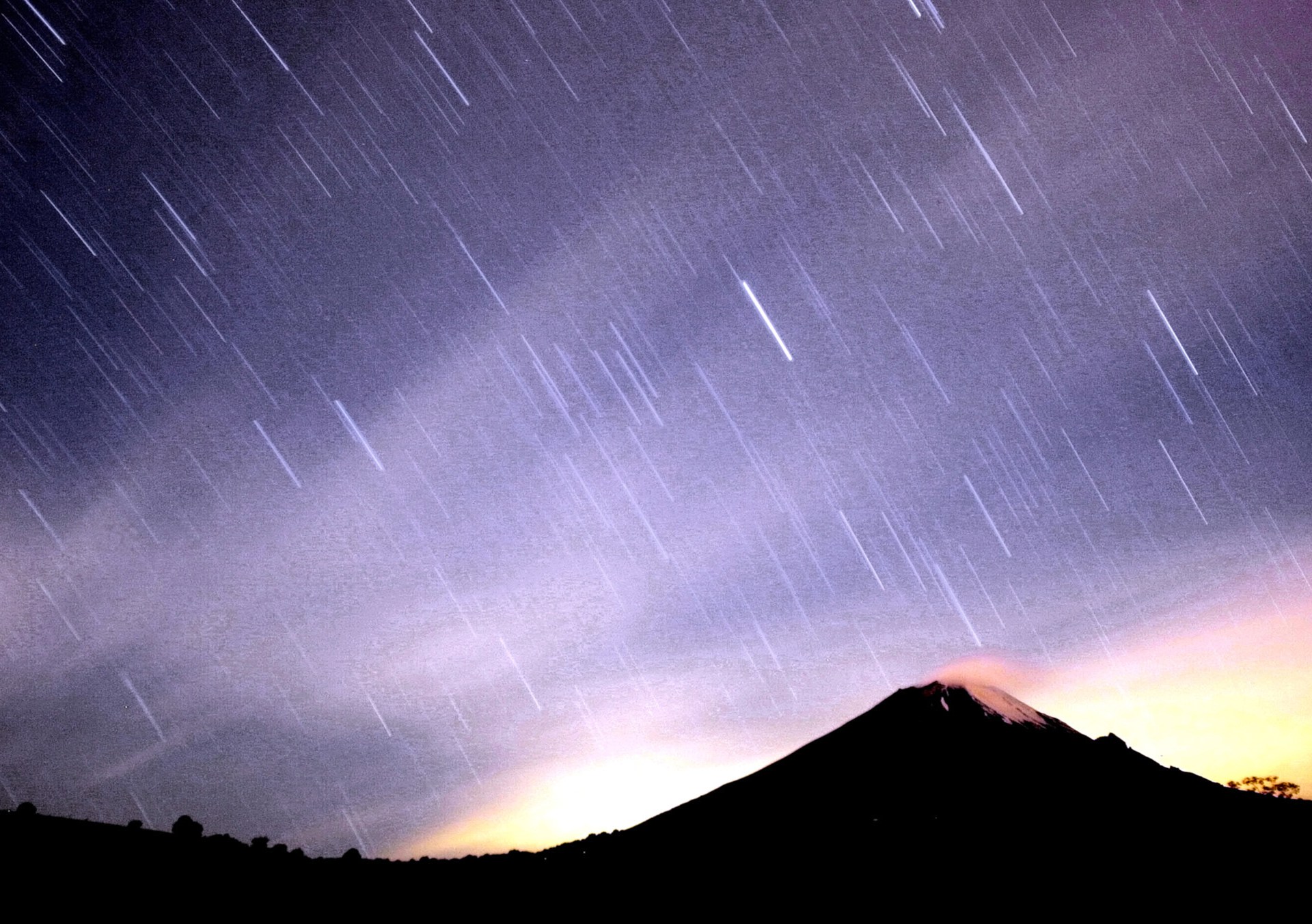EXPLAINER
Considered an annual favourite, the Geminid meteor shower which peaks tonight is believed to be intensifying each year.
Tuesday’s new moon has left a dim sky for one of the year’s most illuminating meteor showers to sparkle across it even more brightly.
The Geminid meteor shower will reach its peak at about 19:00 GMT on Thursday and remain intermittently visible until December 24. Its unique formation sets it apart from the estimated 30 showers that are visible on Earth each year.
Here’s what to know about the display and how to watch it:
What is the Geminid meteor shower?
The Geminid meteor shower is a celestial event that occurs every December and gets its name from the constellation “Gemini”.
It is also one of two annual showers that form when the Earth passes through debris left by asteroids, unlike other meteor showers that are formed by comet debris.
An asteroid is made out of rock while comets are balls of ice and dust. When either of these enter the earth’s atmosphere in large amounts, they burn up creating streaks of light or a “meteor shower”.
An asteroid named 3200 Phaethon was discovered as the source of Geminid meteors in the mid-1980s, while the shower’s first recorded observation occurred in 1862.
What time is the peak and where can you get the best view of the meteor shower?
The event is predicted to peak at 19:27 GMT on December 14 while continuing to be visible through pre-dawn hours.
The best time to watch the shower is between midnight and 2am local time, in any time zone, according to The Planetary Society.
The darkness of late night and the new moon will put the vibrant shower at centre stage, particularly if skies remain clear. Next year’s Geminid shower will occur during the bright rays of a full moon and be less visible.

Where and how can you watch the Geminid meteor shower?
Skywatchers can observe the shower directly or watch a livestream hosted by telescope networks.
The Slooh robotic telescope network and Virtual Telescope Project will be broadcasting the event to their YouTube channels beginning at 22:30 GMT and 23:00 GMT respectively on Thursday.
Although the display will be visible across the globe, the best showers will occur in the Northern Hemisphere and people in the Southern Hemisphere will witness ones with lower rates. Areas with clearer skies will unveil more visible showers.
NASA said that it may take approximately 30 minutes in the dark for eyes to adapt and begin seeing meteors clearly.
What is the direction and appearance of the meteor shower?
Geminids could shoot 120 visible meteors every hour making it the strongest shower of the year, according to NASA.
The further away one is from light pollution, the more likely they are to see the shower in all its fierceness. Otherwise, an average person in their back yard would see approximately half its amount, or one to two meteors per minute, after midnight.
Geminids travel at 35km per second (22 miles per second), more than 40 times faster than a speeding bullet, according to NASA.
Scientists have said the Geminid shower may also be intensifying each year, especially in comparison to the 10-20 meteors per hour that were recorded in the mid-1800s.
Although the meteors appear to originate from the same region in the sky as the Gemini constellation, viewers do not need to look to the constellation to see the Geminid shower – it will be visible throughout the sky in no particular direction. In fact, meteors close to the “radiant”, or point of origin, are easily missed because of shorter trails, said NASA.
The streaks are very bright and white, although they may take on coloured hues depending on the chemical composition of the debris. For example, nickel produces green and sodium and nitrogen create red or orange.
#Geminid #meteor #shower #watch #Space #News











Leave a Reply